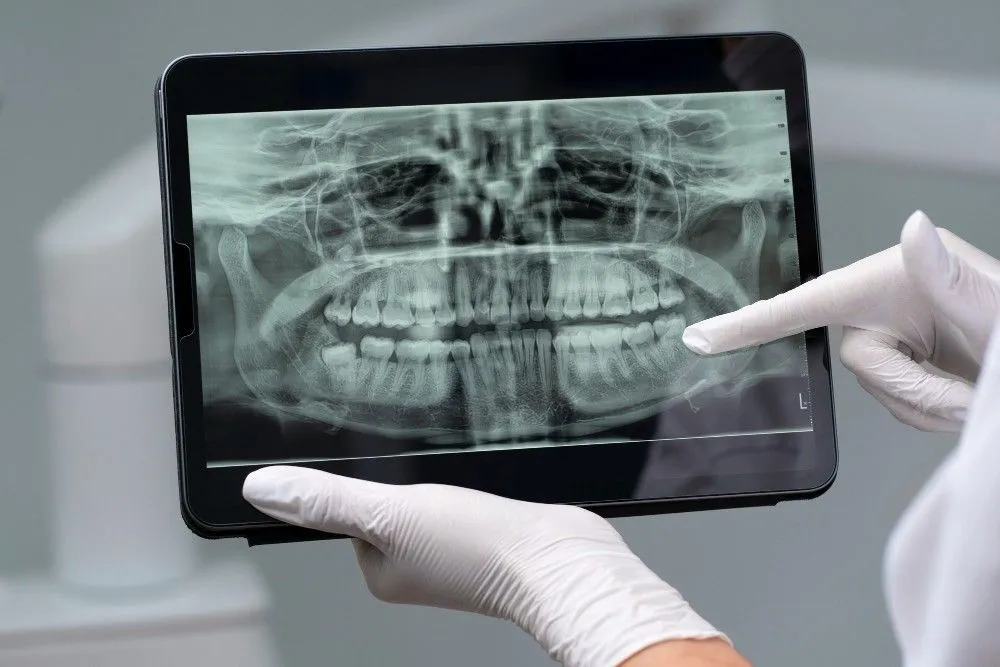What is Root Canal Treatment?
When the root of a tooth becomes infected or inflamed, root canal treatment is performed so as to preserve and protect the infected root. The treatment involves removing the damaged pulp, taking care of the infection and finally, filling the empty canals. Root canal treatment mainly involves drilling from the top part of the tooth.
This removal process takes place by drilling it out with long drills called files.
Root canal treatment has an alternative name- endodontic treatment. This is because it involves treating the inside of a tooth.
What are the indications for RCT?
Several symptoms point to whether or not an RCT is required:
- Pulp infection indicated by a loose tooth
- Pain while drinking or eating very hot and cold foods
- Pain while chewing on foods or biting them
- Blackening of a single, individual tooth.
- Swelling of the face
- Swelling of the gum in the vicinity of the infected tooth
- Oozing of pus from the affected tooth
What are the contraindications for RCT?
A contraindication is a factor that prevents a person from undergoing root canal therapy. Here, contraindications may include:
- Severe infection of the root, which has not yet been treated
- Excessive Root Caries
- Obstruction of the root canal
- Perforation of Root
- Presence of any fractured instrument in the root canal
Who can perform RCT?
Root canal therapy can be performed by a general dentist as well as an endodontist. An endodontist is a dental surgeon who has obtained a specialization in doing only root canal therapy.
How is RCT carried out?
- The first step for RCT is delivering local anaesthesia to the patient. Since it is a painful procedure, it requires the use of some anaesthetic
- After the tooth is numb, the endodontist places a "dental dam", a miniature covering over the area to isolate the tooth from the saliva that might come in contact with the tooth during the process.
- The endodontist makes an opening in the crown of the tooth. The pulp is cleansed with the help of small instruments, taking care not to break these instruments.
- The endodontist fills the root canals with a rubber-like material, gutta-percha. This being a bio-compatible material is placed to seal off the root canals.
- Usually, a temporary filling is placed, which is replaced by a permanent filling.
- After the final visit, it is advised to visit the endodontist to get the crown or the filling.
Different types of RCT
1. Single sitting RCT
It is a new advancement in the method of RCT. It has made the process of RCT painless and time-saving. For patients who run short of time, it is an excellent option. The entire process of RCT occurs in a single sitting with an antibiotic that covers the whole process for the next few days.
2. Multiple treatment RCT
The more conventional treatment involves visiting the dentist over multiple days. It might be a slower process, but at the same time, the procedure ensures greater care and attention from the endodontist.
What are the possible complications of RCT?
Possible complications of RCT include :
- Greater possibility of an RCT tooth to fracture in the future because it is not as strong as a normal tooth.
- Pain is usually felt for a few days following the root canal.
- Discoloration of the affected tooth may occur.
- Allergic reaction to the medicines prescribed.
What are the care guidelines to be followed after RCT?
- It is advised not to chew on that side of the mouth on which RCT has been performed.
- Avoid drinking very hot or cold drinks during the recovery process.
- Frequently rinse the mouth with lukewarm, salty water for a week.
- Take the medicine prescribed by the doctor as and when advised.
- Avoid smoking and consumption of alcoholic beverages for the next 24 hours.
- Sleep with your head in a slightly raised position for the next few days.
Is a crown necessary after RCT?
With the passage of time, our teeth become more prone to fracture and their brittleness increases. This is exactly the reason why teeth that have undergone RCT require a crown, so that through the process, the affected tooth might get shielded and prevented from undue stress, which in turn contributes to the longevity.
How long does the RCT last?
In most cases, the impact of the RCT lasts for a lifetime. This is the case for 95% of those who have undergone RCT. The best way to maximize the impact of RCT is to get the crown or filling right after the RCT. Frequent brushing and flossing of the teeth is also advised. If a cavity is formed even after the RCT, the only way to recognize it is if the tooth gets fractured. Regular X-rays can also be taken.
What are the signs & symptoms of failure of RCT?
The chances of a root canal failing are very less. If an X-ray reveals that the dark portion surrounding the root of the affected tooth has reduced, compared to the time of the root canal, the symptoms are positive and point to healing. However, there are several signs and symptoms of failure of RCT.
These include:
- Deterioration of the seal
- Cracking of the teeth
- Pain
- Swelling of the gum that overlies the roots
- Greater mobility of the teeth that have been treated
- Presence of sinus pus
In the event of the above symptoms, an X-ray must be taken after consulting the dentist. On his advice, re-treatment or removal of the tooth may be considered.
How much does RCT cost?
The cost of RCT varies. It usually costs nearly Rs. 3000 for the procedure and Rs. 4000 for the full ceramic crown.
Also Read: What Can I Eat after a Root Canal: A Nutritious and Tasty Plan.

Reviewed by







